The Best Salad
The best salad I ever had was in London, England at a restaurant with my partner, my brother and his family. It was listed as The Husbandry School Salad at the very bottom of the menu and it was the most memorable dish I had that night in a meal full of spectacularly prepared food. It was the placement of the salad, alone, at the very bottom of the menu that caused me to inquire about it and order it. It was simply described as over 30 different lettuces or greens lightly dressed with a vinaigrette. Now, there’s nothing simple about growing 30 different types of greens, but the salad itself was beautifully simple – just greens with a very, very light vinaigrette. I couldn’t even tell you what flavors were in the dressing, just that it let the flavor of the greens really shine. I start this article with that story because it will contrast with all the information I’m going to give you in the next several paragraphs. You don’t need a fancy dressing; you don’t need a lot of texture; you don’t need a ton of different ingredients in a salad. The very rule that I hold most dear when it comes to food holds true when making salads. Use the very best ingredients you can, do as little to them as possible and you’ll come up a winner. Keep your salads simple, but with great ingredients and you won’t be disappointed. But… there’s always a lot of fun in creativity too, so let’s get started.
There are essentially three parts to a salad – the base ingredient, other complimentary ingredients and a dressing. Let’s start with the main ingredient.
The Main Attraction
Tradition would have us believe that the main ingredient in a salad should be lettuce or greens, but if we held to tradition, we’d all be eating iceberg lettuce salads with chunks of tomato, discs of carrots and cucumber, with a drizzle of Thousand Islands dressing poured from a bottle over the top (at least that’s what was traditional for me growing up). We’re leaving tradition behind us today. Salads do not have to be all about greens, but you do need to select a base ingredient for your salad. Will it be a mixed green salad or a bean salad, a pasta salad or a potato salad, a beet salad or perhaps a grain salad like quinoa or wheat berry. Anything is possible with a salad, but decide what your main ingredient will be. It might be something leftover in the refrigerator (hello last night’s leftover lentils!). Obviously, this main ingredient will form the bulk of the salad, so you just need to make sure you have enough of it. (see the Quick Notes below for a list of possible base ingredients)
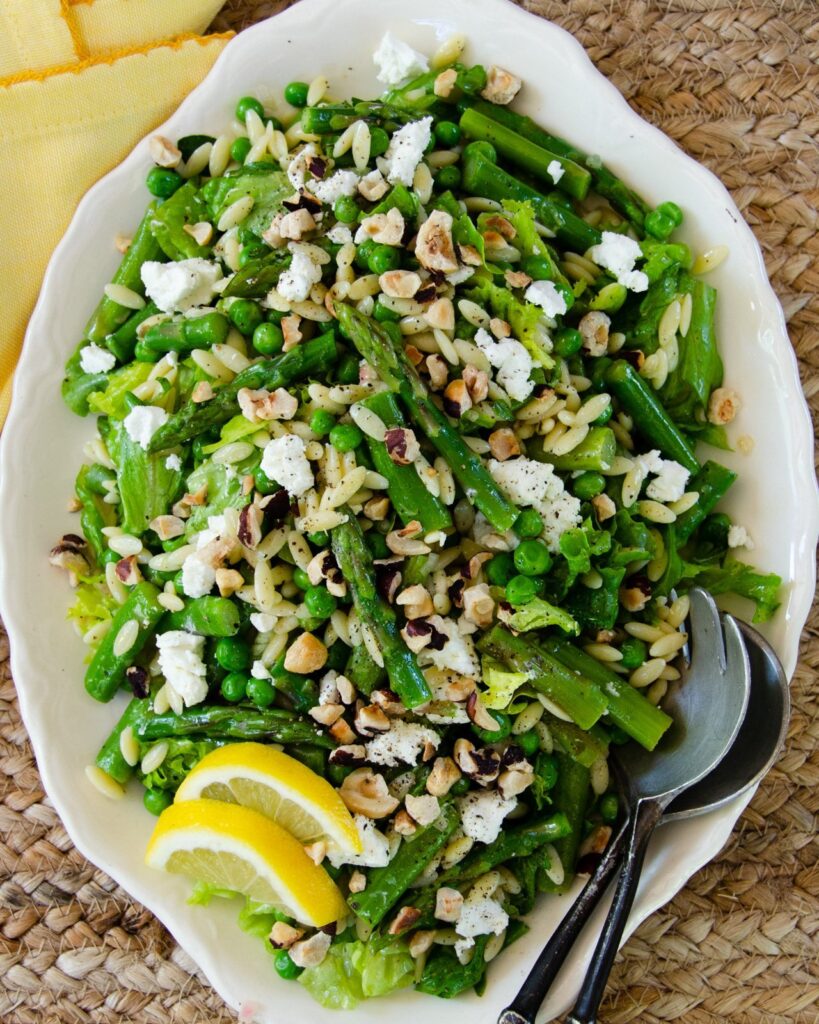
In Supporting Roles…
The second component of a salad includes all the complimentary ingredients that you are going to add to your base. These, honestly, could be anything. This is when you open the fridge, open the pantry door and start looking to see what you have that might go with your main attraction. A leading lady can’t carry the movie on her own, after all, she needs good actors in supporting roles to make the movie great. The first quality the additional ingredients need to have is flavor that goes with the main ingredient. This is usually pretty easy to determine since base ingredients are pretty malleable and not too polarizing. The flavor of the secondary ingredients, however, will start to send you down a path that you’ll want to commit to, so keep that in mind. To help you cast the secondary characters, there are a few things you can think about. Don’t just throw anything into a salad (although sometimes that can turn out quite well). Instead, decide why you’re adding that ingredient. Does it add flavor that compliments the main ingredient, like fresh herbs? Does it add texture in the way croutons or crunchy carrots do? Does it offer a sweet note that complements the salad, like dried fruit or orange segments? Or does it add protein so that you won’t want to eat the salad all over again by the time you’ve finished eating it the first time? If it answers one of these questions, throw it in there!
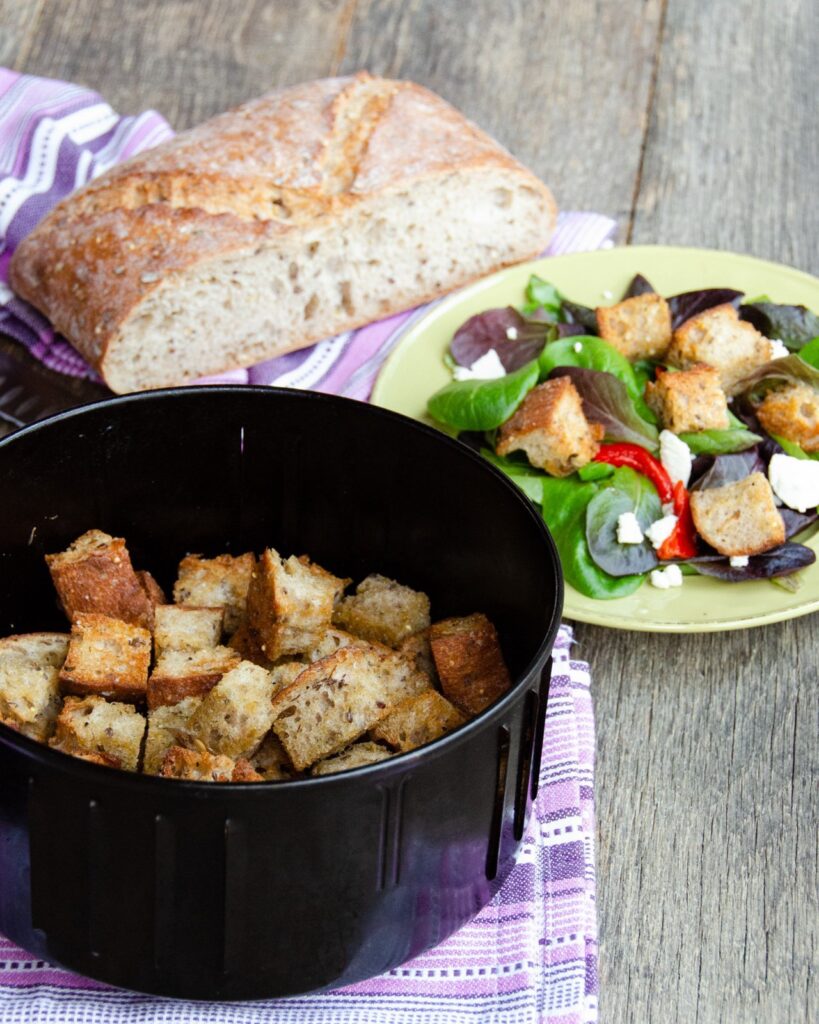
Let’s Get Dressed Up
So, once you’ve invited all your ingredients to the party, it’s time to dress them up. Dressings really fall into two families – the vinaigrettes and the creamy dressings – but they all have basically similar ingredients. All dressings need some sort of acid and some sort of fat. Vinaigrettes are made with oils and usually vinegars, although lemon juice also makes a delicious vinaigrette. Creamy dressings also have vinegars, citrus juices, but instead of oils, they use something that has a creamier, thicker consistency, like sour cream, buttermilk, mayonnaise or even tahini.
Because dressings are made up of fat and acid (oil and vinegar), they have a tendency to separate because these two ingredients do not like to hang out together naturally. Luckily, there are other ingredients that work like that one person in your group of friends that is always inviting everyone together. They are called “emulsifying agents’ (the ingredients, not the people) and they help keep the vinegar and oil in suspension. Well known emulsifying agents are mustard (and mustard powder), egg yolk (think Caesar salad), honey, sugar and other sweet ingredients (including balsamic vinegar which is very sweet all by itself). While you don’t need an emulsifying agent, it will help to keep your dressing from separating and can add nice flavor at the same time.
Finally, you can (but don’t have to) add other flavors to your dressings. Minced shallots and dried spices are commonly added to dressings to give them flavor, but make sure there’s a reason to do so. For instance, you could just add minced shallots to your salad bowl with the other ingredients, but adding them to the vinegar when making a vinaigrette pickles them just a little and allows them to lend their flavor to the vinegar, which then gets tossed all around the salad. Dried spices could be sprinkled on the salad, but adding them to the oil allows their oil-soluble flavors to really come out and be properly expressed. Those are two great reasons to add these ingredients to the dressing, rather than to the salad itself.
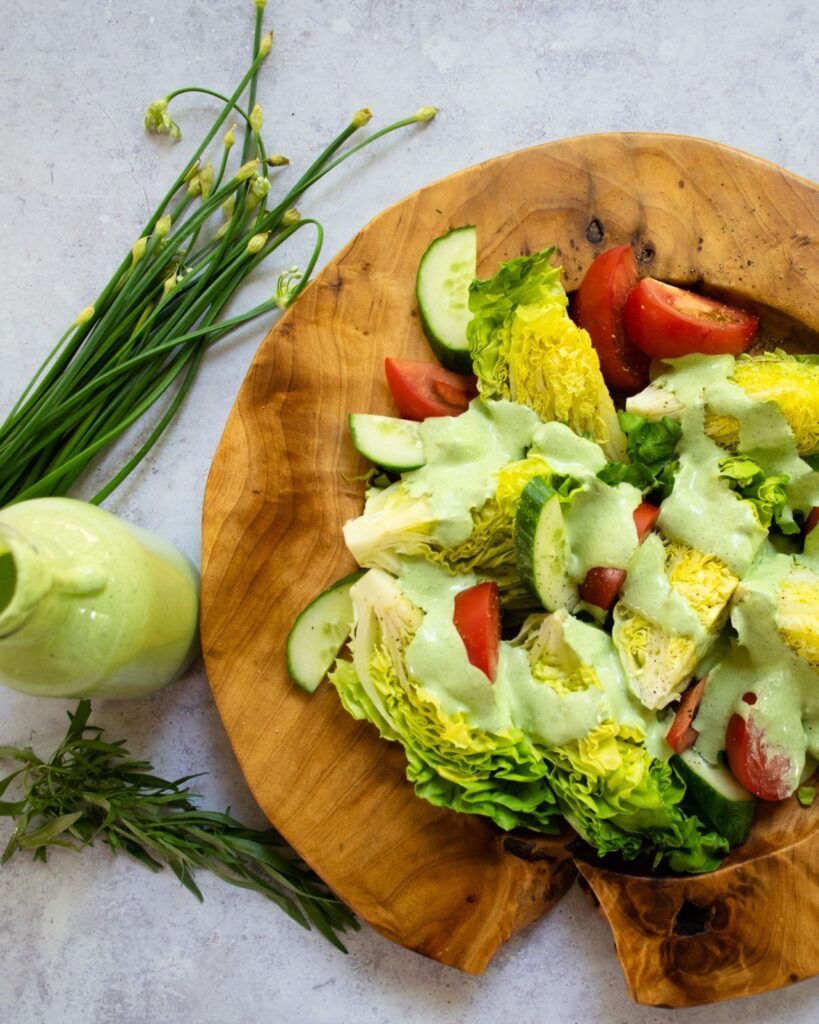
Matchmaker, Matchmaker, Make me a Match…
Now there is something to pairing salad ingredients with a dressing. It’s mostly about what sort of dressing the main ingredient can handle (Romaine lettuce can handle heavier dressings than arugula for instance) and what finished texture will result (tiny couscous or quinoa with a thick creamy dressing does not appeal). Here are some suggestions so you know what I mean:
- Mixed Greens – vinaigrette
- Arugula – vinaigrette
- Romaine or Iceberg lettuce – creamy dressing
- Kale and other dark greens – vinaigrette or creamy dressing
- Grains (quinoa, rice) – vinaigrette
- Legumes or Beans – vinaigrette
- Vegetable (potato, cauliflower, cabbage, etc…) – vinaigrette or creamy dressing
- Large shape pasta (penne, rotini) – vinaigrette or creamy dressing
- Small shape pasta (couscous, orzo) – vinaigrette
Tips
When it’s time to throw everything together, there are just a few more things to consider.
- No knives. No-one wants to eat a salad with a knife, so make sure the pieces of food are fork-friendly. That doesn’t mean tear up mixed greens, but it does mean you should cut your potatoes into the size that you can eat them politely from a fork.
- Season your salad AND your dressing. The word ‘salad’ actually comes from the Latin word ‘sal’ for ‘salt’ and was probably derived from ‘herba salata’ or ‘salted vegetables’. It’s important to season your dressing properly and then season your salad too. Think of it like seasoning a sauce for a steak, but not seasoning the steak. That’s just not right.
- Less Vinegar More Oil. When dressing a salad ‘à la minute’ (this means pouring the vinegar and oil directly on the salad without pre-mixing it in a bowl), think about adding less vinegar than you think and more oil than you think. This will generally get you to that 1:3 ratio of vinegar to oil that you are looking for.
- Think before you dress. Most of the time you should dress your salad just before you serve it, but this doesn’t hold true 100% of the time. For salads based on salad greens, dress the salad just before you pop it on the table. The acid in the salad will start to wilt the greens and they’ll be spent before you know it so last minute is key. Heavier, heartier ingredients like potatoes, cabbage, grains and beans can handle being dressed ahead of time and sometimes even benefit from it because they absorb the dressing’s flavor. So, just think before you dress. (I’ve found this to be a helpful tip in other areas of my life as well!)
- Start with a little. You can give, but you can’t take away. That’s a rule that holds true in a lot of cooking – when seasoning with salt, adding spices or chili pepper, etc… Make sure you abide by this rule when adding the dressing to a salad. Add a little dressing to your salad and then add a little more if you need it, rather than wishing you hadn’t added so much to begin with. More is not always better in this case – you don’t want your salad swimming, or even worse drowning. No-one likes to show up over-dressed.
A salad can be as much or as little as you want it to be, but with all these possibilities the last thing it should be is boring. If you’re intimidated to make a salad, just remember that you can’t really make a mistake. Mistakes in cooking are all subjective, after all. Make it complicated or keep it simple. I know which I prefer. The name of the restaurant, by the way, was Portland.
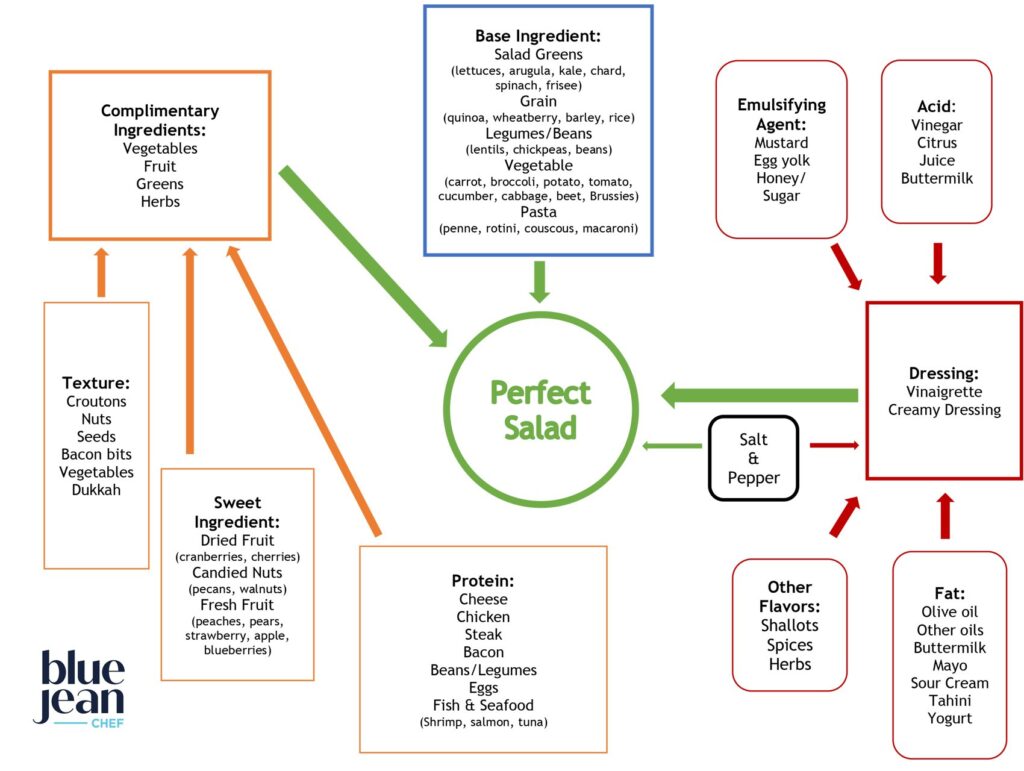
Quick Notes:
- The three components to a salad are: 1) a base ingredient, 2) complimentary ingredients and 3) a dressing.
- A base ingredient can be anything, but it will make up the bulk of the salad so ensure you have enough. Examples of base ingredients:
| Lettuces | Grains | Pasta | Legumes/Beans | Vegetables |
| Mixed Greens | Quinoa | Penne | Lentils | Potato |
| Romaine Lettuce | Wild Rice | Rotini | White Beans | Tomato |
| Iceberg Lettuce | White Rice | Orzo | Black Beans | Cucumber |
| Kale | Brown Rice | Couscous | Chickpeas | Bell Pepper |
| Spinach | Barley | Macaroni | Black Eyed Peas | Carrot |
| Frisée | Wheat Berry | Broccoli | ||
| Arugula | Cabbage, Brussels | |||
| Bibb Lettuce | Cauliflower | |||
| Beets |
- Complimentary ingredients can be almost anything in your fridge or pantry that would add a complimentary flavor, but should fall into one of the following categories: adds flavor, adds a sweet note, adds protein. Examples of complimentary ingredients:
| Adds Texture | Adds Sweetness | Adds Protein |
| Croutons | Fresh Fruit | Chicken |
| Nuts | Dried Fruit | Steak |
| Seeds | Candied Nuts | Fish (tuna, salmon) |
| Crunchy Vegetables | Seafood (shrimp) | |
| Dukkah (seed blend) | Bacon | |
| Bacon Bits | Eggs | |
| Cheese | ||
| Beans/Legumes | ||
- Dressings can be vinaigrettes or creamy dressings, but they all have an acid and a fat. Examples of Acids and Fats:
| Acids | Fats |
| Balsamic Vinegar | Olive Oil |
| Apple Cider Vinegar | Seed Oil |
| Rice Wine Vinegar | Vegetable Oils |
| Lemon or Lime Juice | Nut Oils |
| Buttermilk | Flavored Oils |
| Flavored Vinegars | Sour Cream |
| Tahini | |
| Yogurt | |
| Mayonnaise |
- Match the salads and the dressings for optimal texture. Examples of match-making:
| Base Ingredient | Suitable Dressing |
| Mixed Greens | Vinaigrette |
| Arugula | Vinaigrette |
| Romaine or Iceberg Lettuce | Creamy Dressing |
| Kale, Spinach or Chard | Vinaigrette or Creamy Dressing |
| Grains (quinoa, rice) | Vinaigrette |
| Legumes or Beans (lentils, black beans, etc..) | Vinaigrette |
| Vegetables (potatoes, cauliflower, cabbage, etc..) | Vinaigrette or Creamy Dressing |
| Large Pasta (penne, rotini) | Vinaigrette or Creamy Dressing |
| Small Pasta (couscous, orzo) | Vinaigrette |
- Make sure all the ingredients of the salad are bite-sized and can be eaten with a fork politely.
- Season your dressing AND your salad with salt and freshly ground black pepper.
- When dressing a salad à la minute, use less vinegar and more oil than you think.
- Dress light green salads immediately before you serve them.
- Dress heartier salads ahead of time so they absorb the dressing’s flavor.
- Start with a little dressing and add more if needed so you don’t overdress the salad.
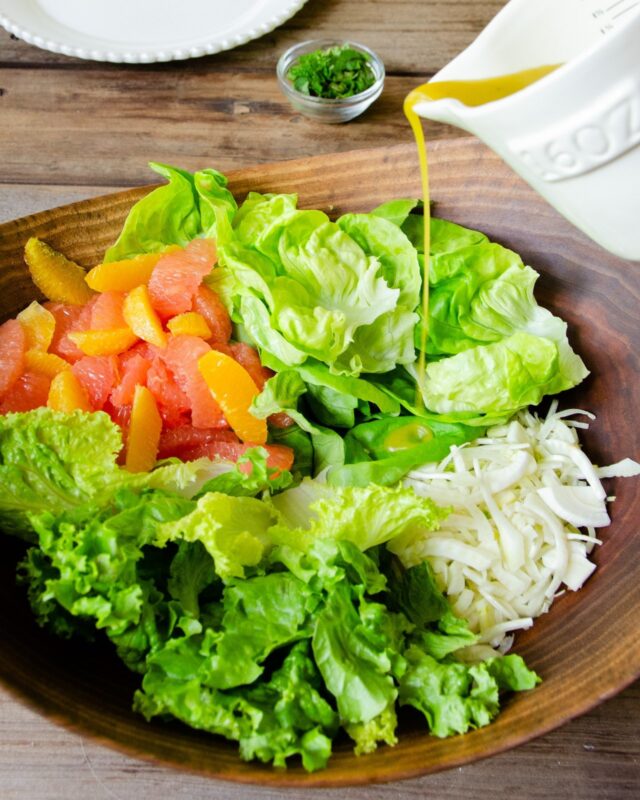
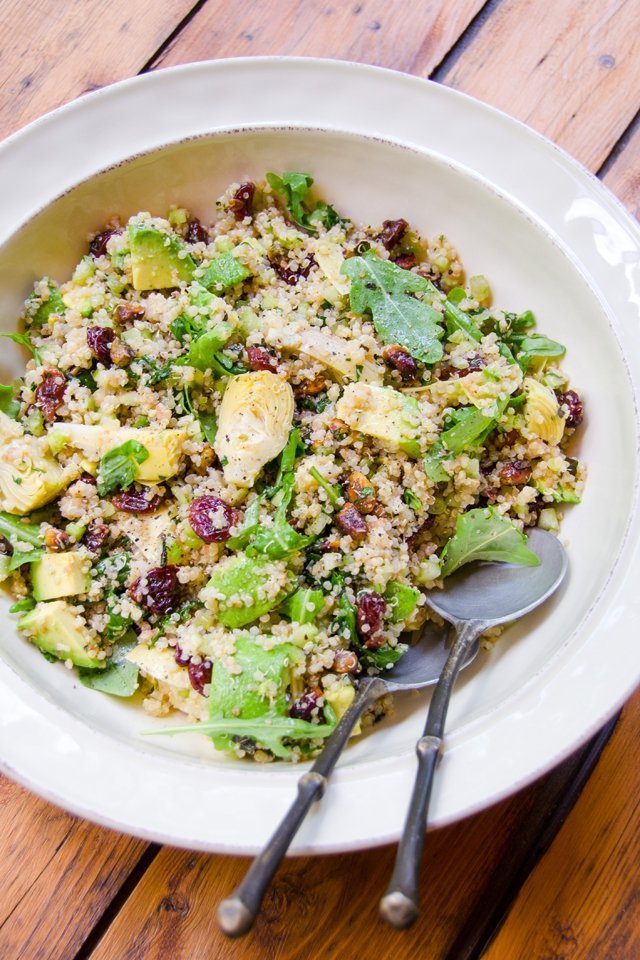
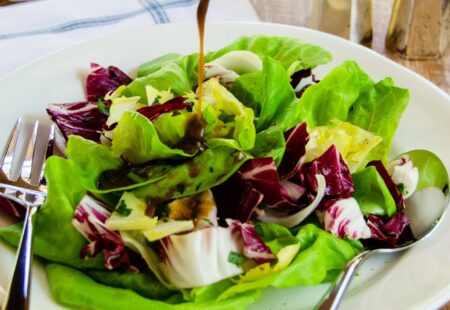
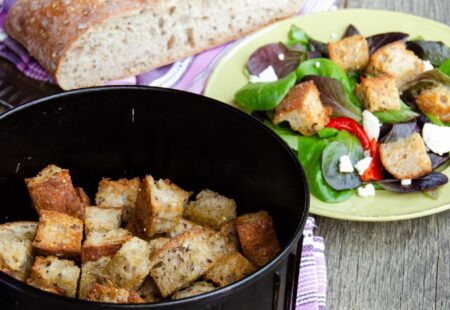
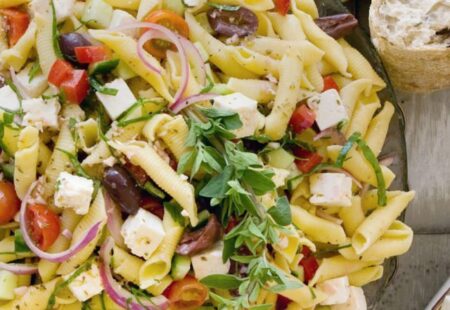
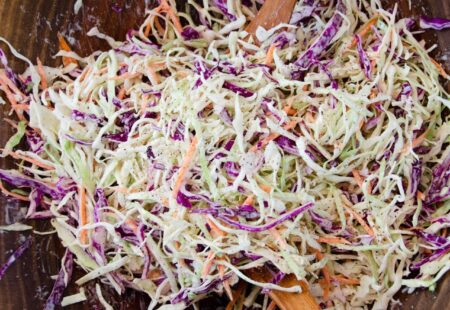
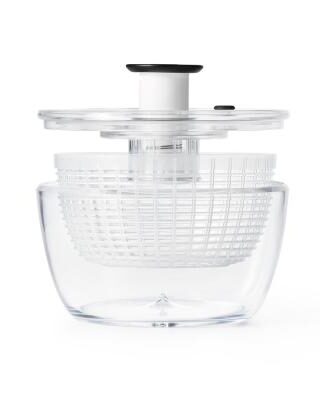

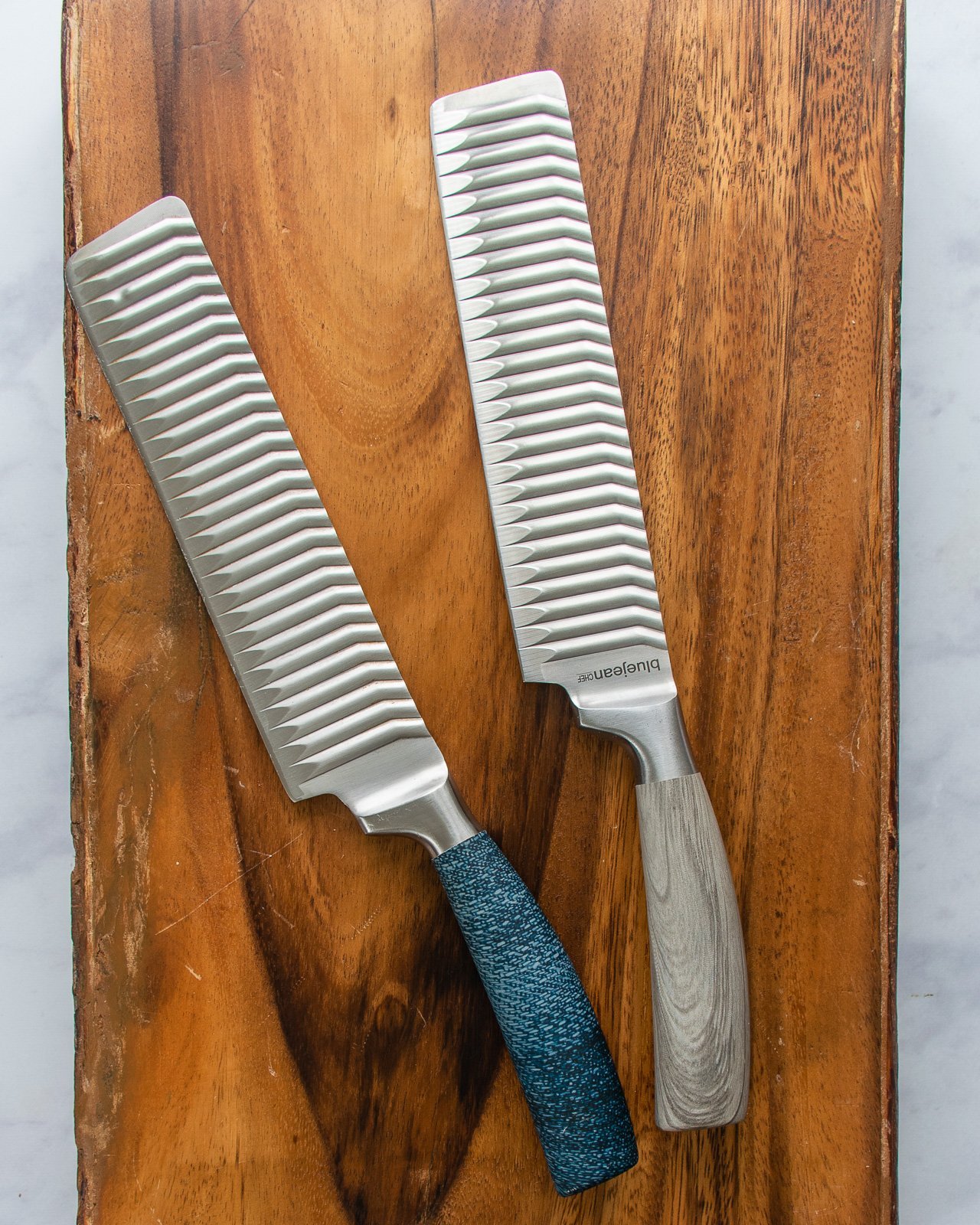
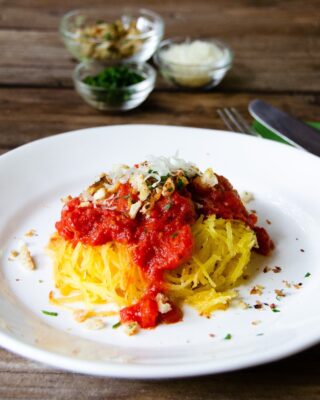
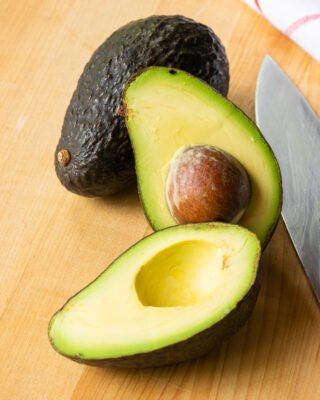
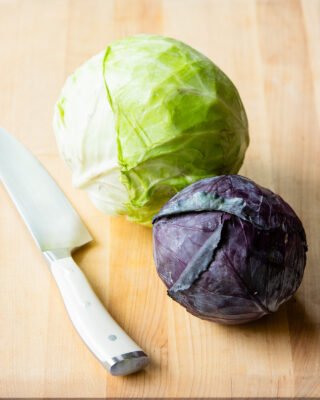
Meredith – I never knew that a creamy dressing should go with Romaine or Iceberg lettuce. Thank you! No wonder my salad always tasted so blah and unappetizing whenever I used another dressing on it. It sort of wilted before my very eyes.